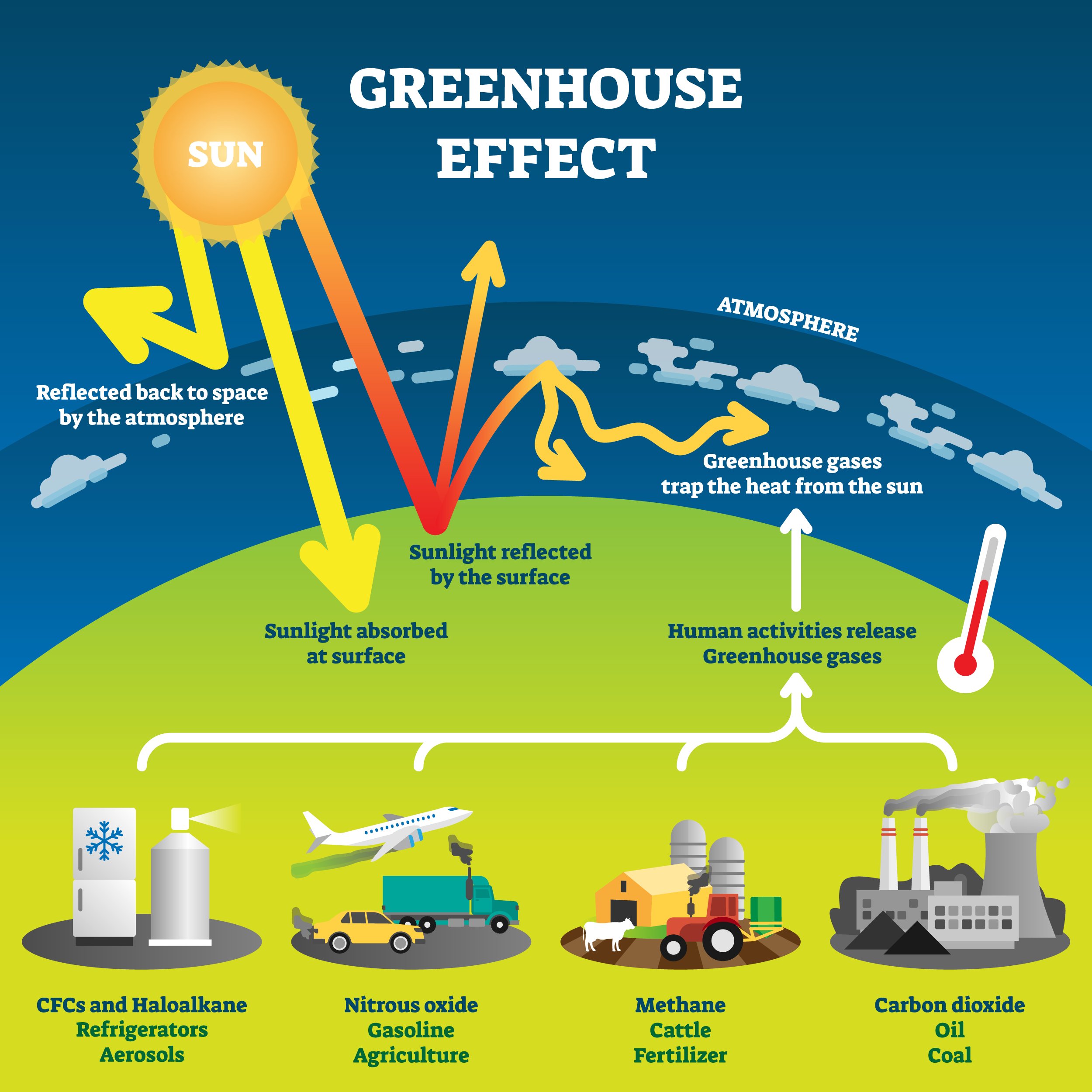The 3 Most Common Greenhouse Gasses
Let’s demystify greenhouse gasses! These gasses trap heat when they end up in the atmosphere around our planet. They allow sunlight to pass through the atmosphere, but trap the heat that the sunlight brings so it doesn’t leave the atmosphere. The planet ends up wrapped in a super “hot blanket,” which leads to global warming.
The main types of greenhouse gasses are:
CO2
Carbon dioxide is known as the most common greenhouse gas. It makes up 76% of the world’s greenhouse gas emissions, and once it goes into the atmosphere, it hangs around for a LONG time — between 300 to 1,000 years. Most carbon dioxide is created when we burn oil, natural gas, and coal (all three are known as fossil fuels) for electricity, transportation, and the creation of cement. Carbon dioxide can be removed from the atmosphere and stored when it is absorbed by plants, soils, animals, and the ocean as part of the carbon cycle.
CH4
Methane is the second most common greenhouse gas that human activities emit. It makes up 16% of the global greenhouse gas emissions. Methane is about 20 times stronger than carbon dioxide, which means that it traps more heat and creates more warming. Thankfully, it stays in the atmosphere for a way shorter time—around 10 years. Methane is produced during agricultural activities and rearing livestock (like cows, bulls, sheep, pigs), the production and transportation of coal, natural gas, and oil, and when we throw away food. These scraps end up in landfills and starts to decompose there, so it’s much better to compost them!
N2O
Making up 6% of global greenhouse emissions, nitrous oxide is even more powerful than methane and carbon dioxide when it comes to warming the atmosphere.Nitrous oxide is emitted during agricultural activities, including when we apply chemical fertilizer to soil and plants, burn fossil fuels, or treat wastewater.
By trying to lower the greenhouse gasses that we produce everyday, we can fight against climate change and global warming!





